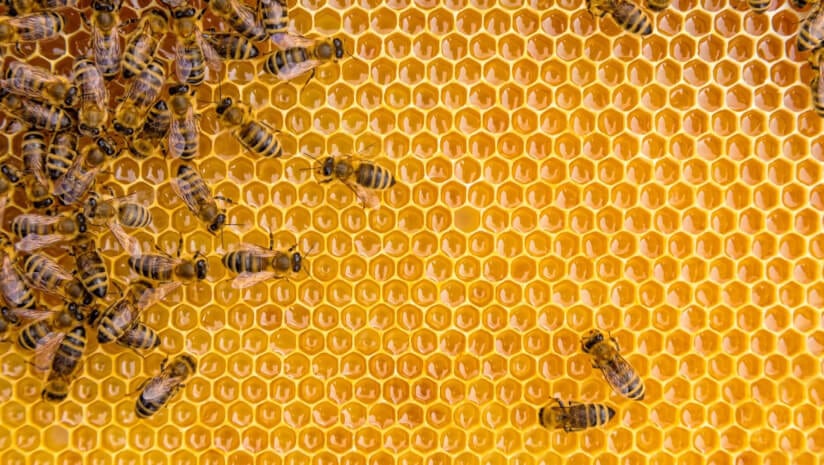The researchers sampled western honey bee colonies in eastern Austria throughout last year’s spring and summer as a way to assess PFAS levels.
They used bees because they usually forage within 2km or 3km of their hive, making them great indicators of local contamination.
Additionally, the three-to-four-week lifespans of worker bees allow for analysis of PFAS levels across short periods of time.
What is PFAS?
PFAS – also known as forever chemicals – are a group of more than 12,000 synthetic chemicals which are used in everyday items - from frying pans, to waterproof clothing and food packaging. Within the food sector, alongside packaging, they can also be found in machinery and even food grade lubricants.
First popularised in the 1940s, these durable chemicals have since been linked to serious health concerns including cancer, fertility issues and liver damage.
PFAS can be found in most places and over time it can leak into the soil, plants, pollen, air and water, eventually making its way into our bodies.
Working with both scientists and citizen-scientist beekeepers, the team from The James Hutton Institute and the University of Graz gathered samples of forager bees, hive bees and pollen from six locations between April and August 2024.
These locations covered a diverse range of land uses, including urban, semi-urban, rural, and agricultural; with samples collected every month. Each sample consisted of 20 bees, allowing researchers to check PFAS levels without damaging the wider colonies.
The researchers found detectable levels of PFAS in every sample at every location. Across the 90 samples, nine different types of forever chemicals were identified.
On average, the highest concentrations of PFAS were found in hive bees, followed by forager bees and then pollen.
The team also discovered that forager bees bring PFAS into the hive, either on their bodies or through contaminated resources such as nectar and pollen.
While the scientists at the University of Graz have previously used the remains of wild bord and whales to monitor PFAS levels, the study’s authors believe this is the first time honeybees have been used in this way.
The researchers are hoping that this latest methodology can be utilised across Europe and hope to team up with international collaborations to create a continental-wide PFAS monitoring network.
“In comparison to other species previously used for monitoring PFAS, honey bees have a significantly shorter lifespan. Since they’re so short-lived, they’re excellent indicators of short-term acute contamination. All these short time periods then build up to give a proper idea of the changes in an environment,” said Dr Viktoria Mueller, an environmental chemist at the Hutton and one of the study’s co-authors.
“Their role as foragers and small foraging radius also makes them great bioindicators for PFAS contamination."
The team plans to conduct further research into the impact of PFAS on the honeybees, with Mueller saying they are keen to “understand the impact of PFAS on honeybees and why these changes in PFAS levels are occurring”.





